There can be your advertisement
300x150
Houses of the Soviet Era: A Guide for Beginners
We explain what lies behind the mysterious names of typical housing in Russia
Have you ever wondered why real estate agents speak in some strange language? "A cozy 2-room flat in a brezhnevka" or "A stalinka with high ceilings is waiting for its owner." If you feel like Alice in Wonderland when you hear these terms, don't worry. Fasten your seatbelts, we're off on an exciting journey through the history of Soviet architecture!
Articles on this topic:
- Stalinkas: timeless symbols of the Soviet era
- Khrushchevkas: typical solutions of Soviet housing construction
- Breznhevkas: architecture and its impact on urban space
- History of typical apartments: from khrushchevkas to euro-2s and euro-3s
Stalinka: A Palace for the Proletariat
Let's begin our journey with the "golden age" of Soviet architecture - Stalinist buildings.
When built: 1930s - mid-1950s.
Features:
- High ceilings (3-3.5 meters) - so the working man can breathe deeply!
- Thick walls - no noise will prevent building communism.
- Spacious apartments - from 40 to 100 sq. m. and more.
- Often include vestibules (rooms with windows) - for admiring the bright future.
- Beautiful facades with moldings and columns - because the proletariat deserves to live in a palace.
Interesting fact: some stalinkas had rooms for servants. Irony, isn't it?
- Pros: durability, beauty, spaciousness.
- Cons: old utilities, high utility bills due to large area.
 Design: Irina Bdaytsieva
Design: Irina Bdaytsieva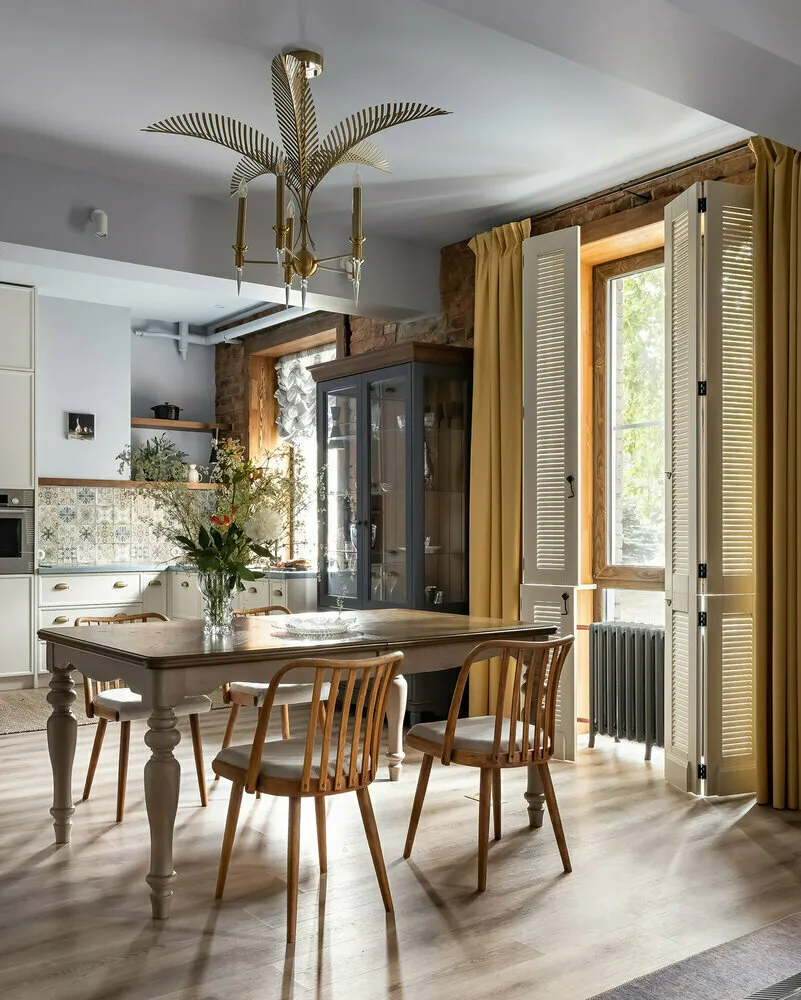 Design: Marina Kutepova
Design: Marina KutepovaKhrushchevka: When Square Meters Are Worth Gold
After Stalin came to power, Khrushchev decided that every Soviet family should live in a separate apartment. Thus, the famous khrushchevkas were born.
When built: late 1950s - mid-1980s.
Features:
- Low ceilings (2.5 meters) - economy, comrades!
- Small kitchens (5-6 sq. m.) - so you won't be distracted from building communism by cooking.
- Combined bathroom - two rooms in one, what could be better?
- Thin walls - great sound transmission, always up to date with neighbors' lives.
- No elevators in five-story buildings - sport - the key to health!
Interesting fact: khrushchevkas were designed as temporary housing for 25 years. But we all know that nothing is more permanent than the temporary.
- Pros: separate apartments for each family, low cost.
- Cons: cramped, noisy, sometimes cold.
 Design: ArkhOsnova
Design: ArkhOsnova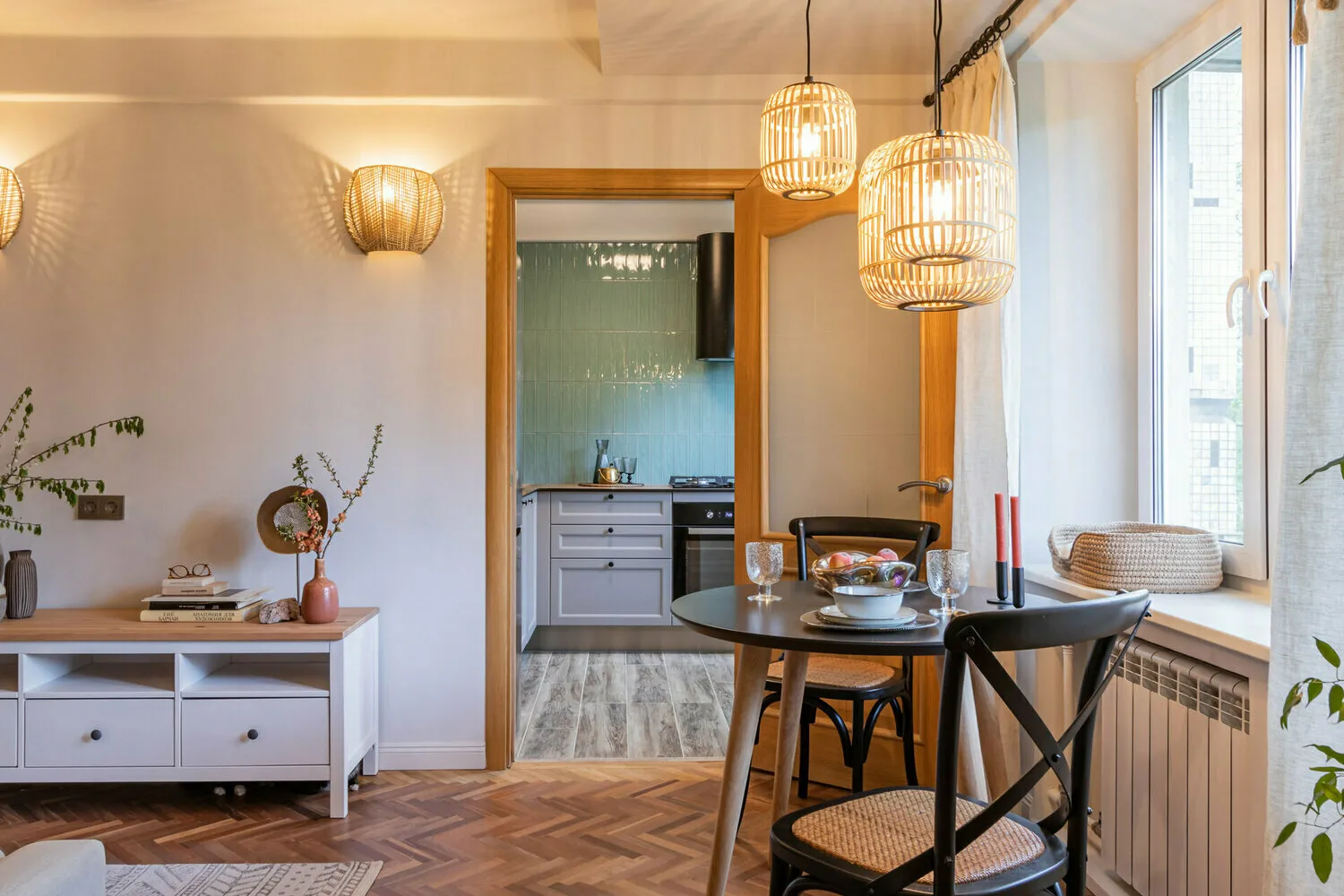 Design: Polina Andreeva
Design: Polina AndreevaBreznhevka: Improved Khrushchevka or "Hello" from Stagnation
When it became clear that khrushchevkas wouldn't solve all problems, brezhnevkas came on stage.
When built: mid-1960s - mid-1980s.
Features:
- Taller ceilings (2.7-2.8 meters) - now you can breathe more freely.
- Spacious kitchens (6-8 sq. m.) - there's room to unfold your Olivier salad.
- Separate bathroom - progress is in sight!
- Balconies instead of loggias - more space to store jars of pickles.
- Elevators in buildings with 9+ floors - goodbye, sport, hello, comfort.
Interesting fact: it was in brezhnevkas that "garbage chutes" were first introduced - the greatest invention for lazy people.
- Pros: more comfortable than khrushchevkas, more functional layout.
- Cons: still not a palace, sound insulation problems.
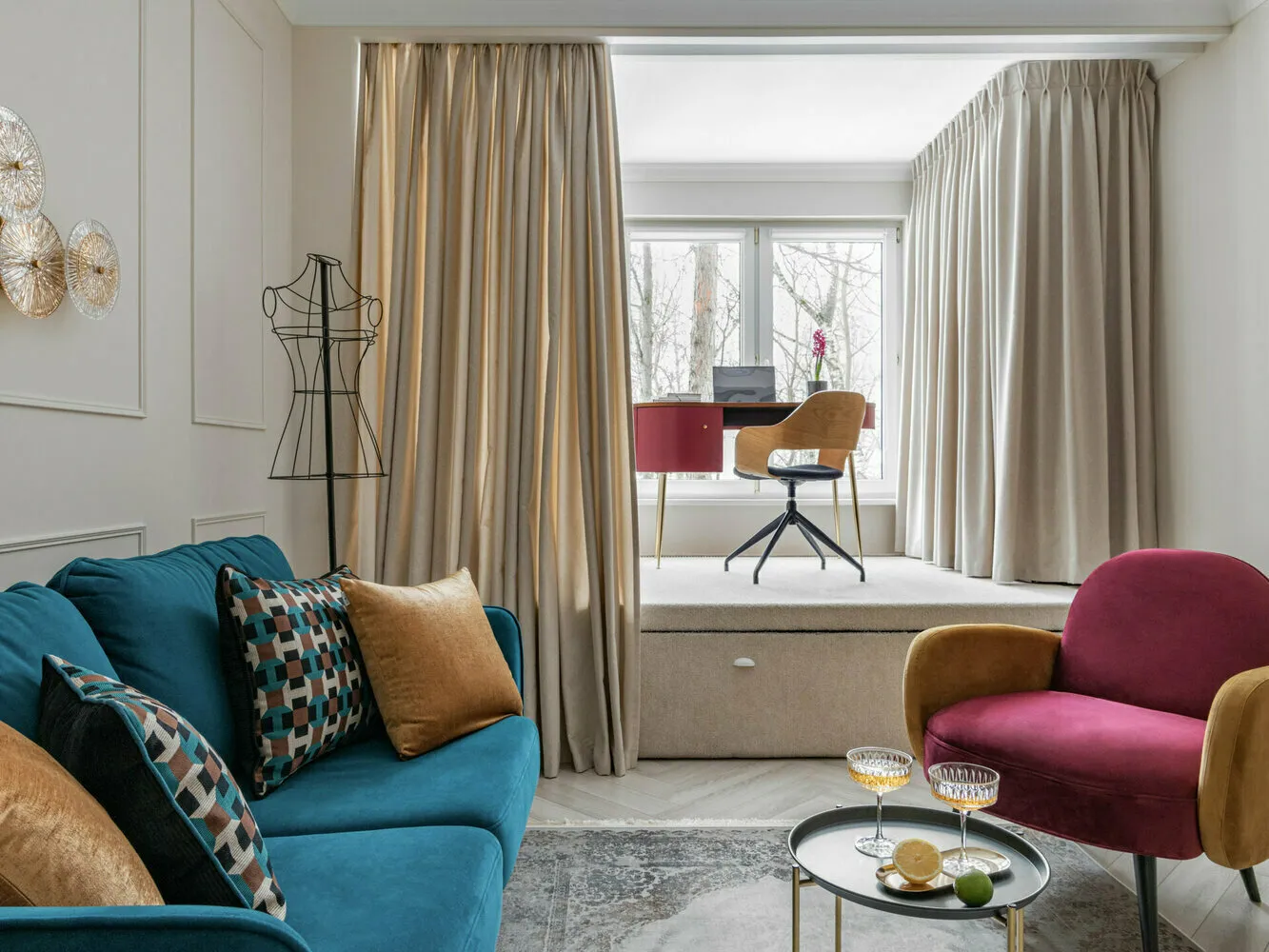 Design: Yana Mishukova
Design: Yana Mishukova Design: Ekaterina Lyubimkina
Design: Ekaterina LyubimkinaCheska: Hello from Socialist Czechoslovakia
Here's the foreign guest in our parade of Soviet housing - the Czech project or simply "cheska".
When built: 1970s - 1980s.
Features:
- Unusual layout - rooms sometimes arranged in a "G" shape.
- Spacious kitchens (9-12 sq. m.) - almost like in American movies!
- High ceilings (2.8-3 meters) - so there's room to let your imagination run wild.
- Wide sills - excellent spot for seedlings or a cat.
- High-quality materials - built with care.
Interesting fact: "cheskas" are often confused with "breznhevkas", but those who know always distinguish them by their special atmosphere of comfort.
- Pros: convenient layout, quality construction.
- Cons: rarity - such buildings aren't found in every city.
New Panel: The Last Salute from the USSR
The last hero in our parade is the new panel - housing that was built in the final years of the Soviet Union.
When built: mid-1980s - early 1990s.
Features:
- Improved layout - finally spacious!
- Large kitchens (9+ sq. m.) - there's room to express your culinary creativity.
- Separate bathrooms - civilization, indeed.
- High ceilings (2.7-2.8 meters) - we can breathe fully.
- Quality plumbing fixtures - some taps are said to have lasted until our days!
Interesting fact: many buildings of this series were completed even after the Soviet Union collapsed, so it can be said that they survived the dissolution of the USSR.
- Pros: spacious apartments, convenient layout.
- Cons: not as solid as stalinkas, sound insulation issues possible.
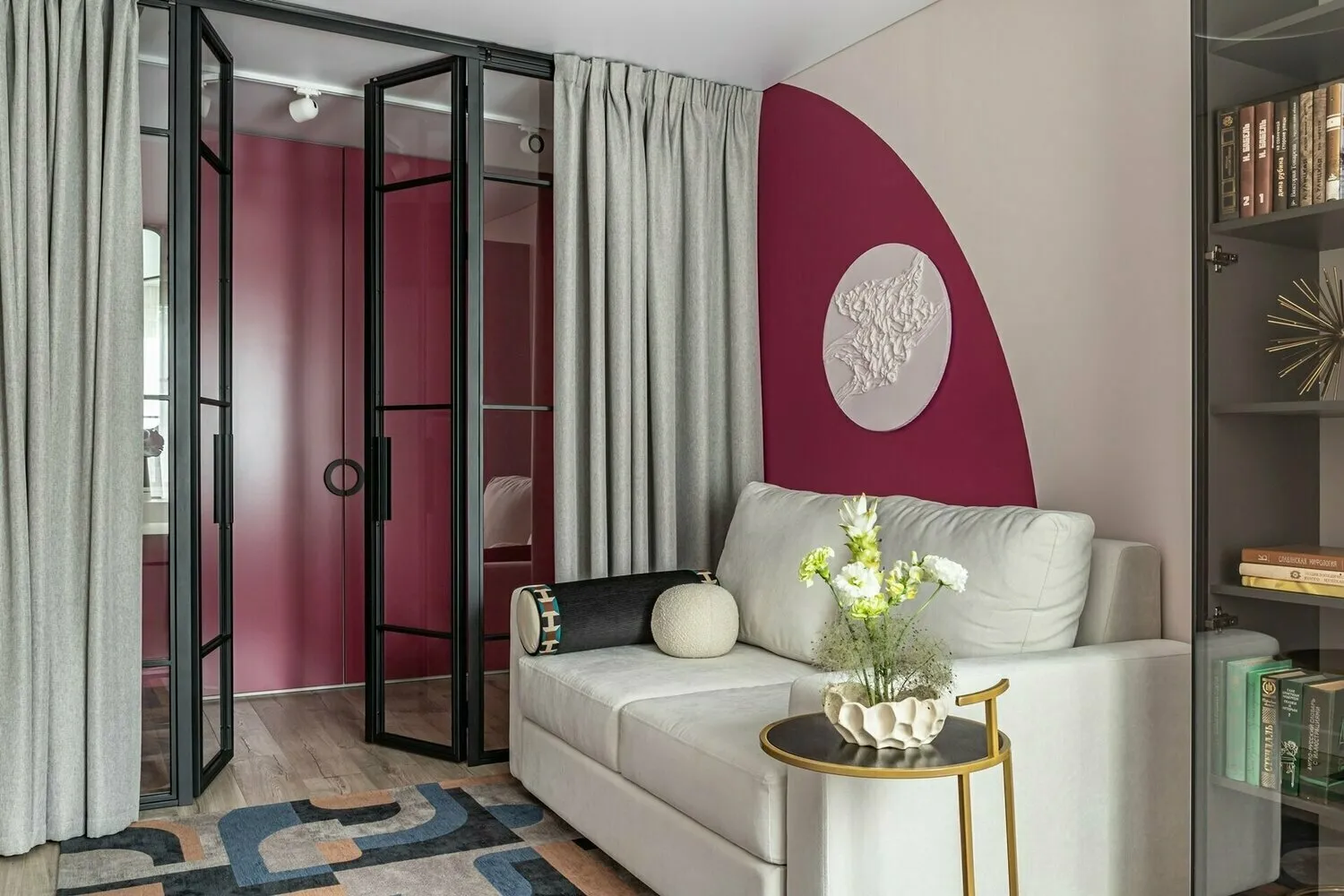 Design: Yana Gaeyskaya
Design: Yana Gaeyskaya Design: Elena Bdrova
Design: Elena BdrovaIt's not fair to judge an apartment solely by the type of building. Each series has its own pros and cons. The main thing is to assess the condition of a specific apartment and the building as a whole. Sometimes a khrushchevka after a good renovation can be cozier than a new build.
Now you're armed with knowledge and can boldly set off in search of your ideal home. Remember, each type of building is part of our history, with its own characteristics and character. Who knows, maybe it's in a "khrushchevka" or "brezhnevka" that you'll find the apartment of your dreams!
Cover: Design project by Fatima Berezovaya
More articles:
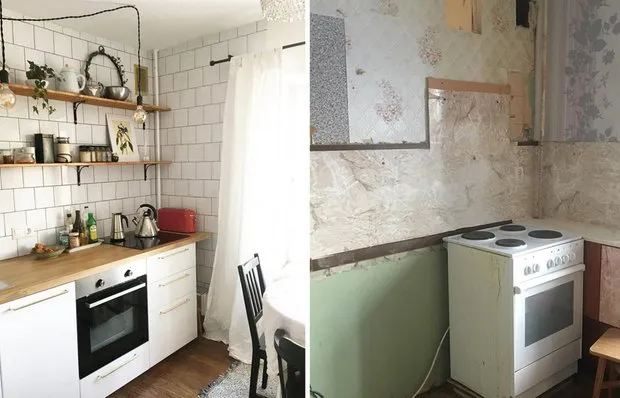 From Panel House to Scandi: How a Young Mom Transformed a Typical Kitchen (Before and After Photos)
From Panel House to Scandi: How a Young Mom Transformed a Typical Kitchen (Before and After Photos)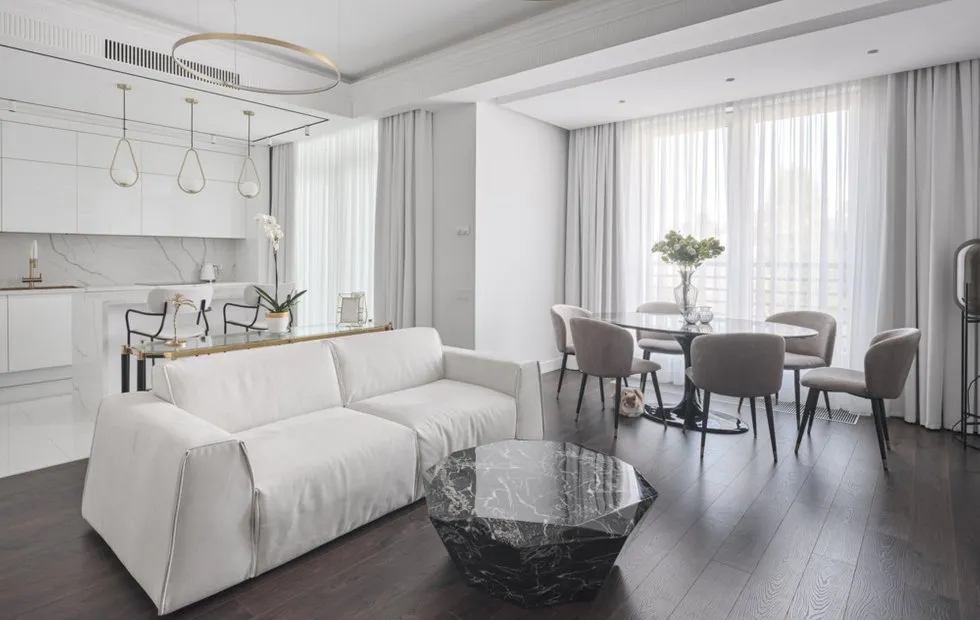 White Interior: Fashionable Trend or Trap for Perfectionists?
White Interior: Fashionable Trend or Trap for Perfectionists?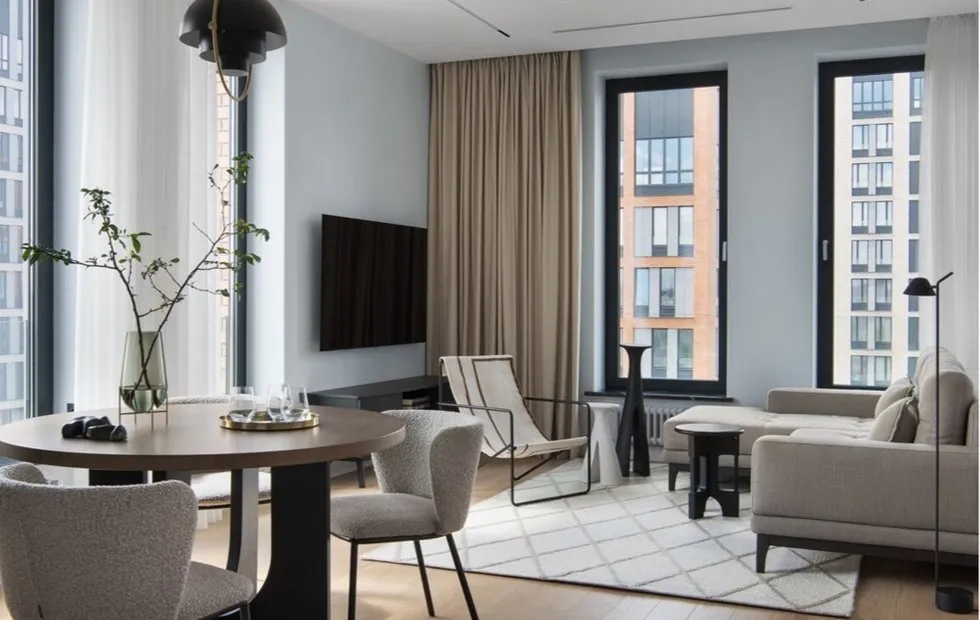 You Can't Demolish: The Truth About Combining the Kitchen with the Living Room
You Can't Demolish: The Truth About Combining the Kitchen with the Living Room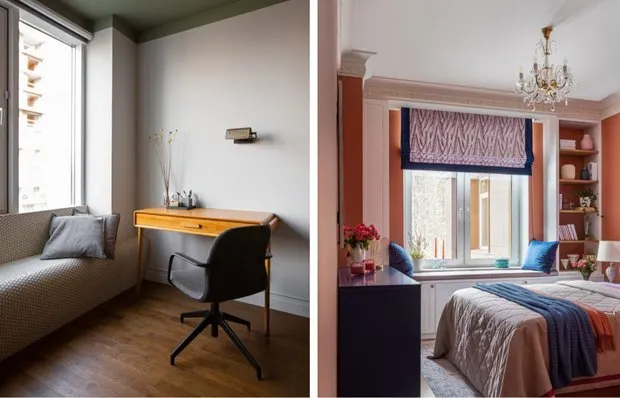 Relax Zone by the Window: 7 Cozy Solutions from Designers
Relax Zone by the Window: 7 Cozy Solutions from Designers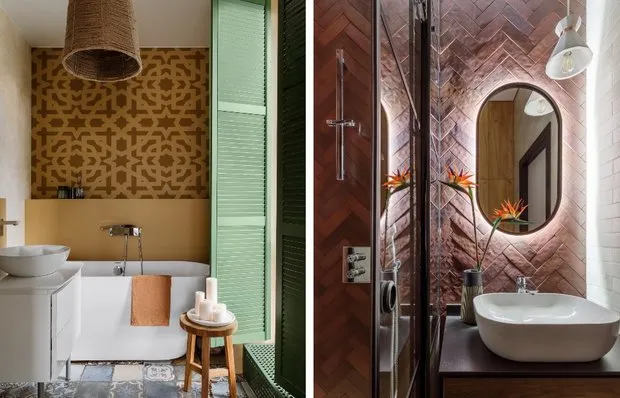 Bathroom with Spa Effect: 7 Beautiful Solutions for Your Home
Bathroom with Spa Effect: 7 Beautiful Solutions for Your Home How a Designer Beautifully Decorated a 87 m² Townhouse for Herself
How a Designer Beautifully Decorated a 87 m² Townhouse for Herself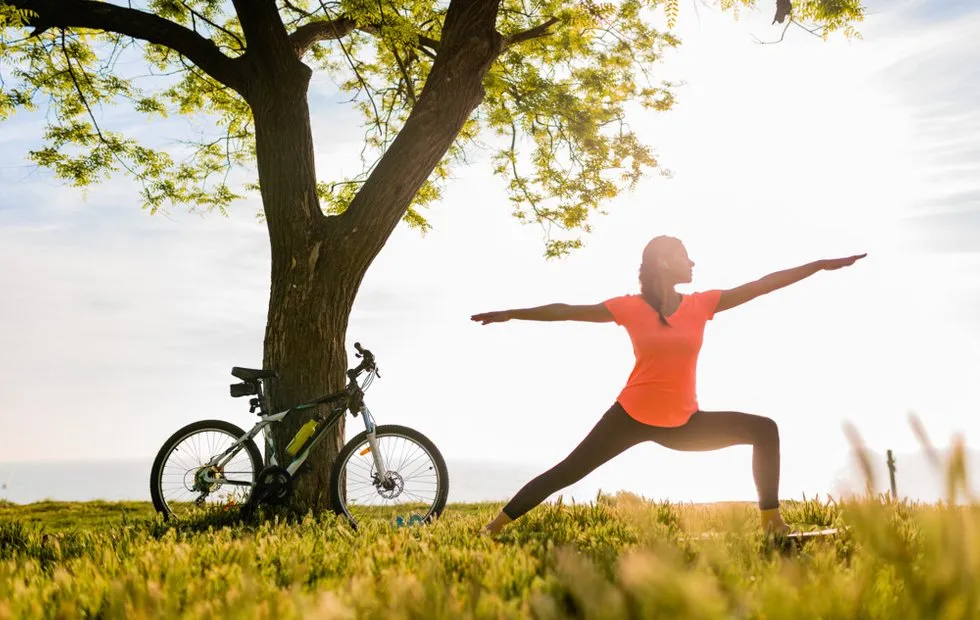 Biohacking for Beginners: Simple Ways to Improve Health Without Extreme Measures
Biohacking for Beginners: Simple Ways to Improve Health Without Extreme Measures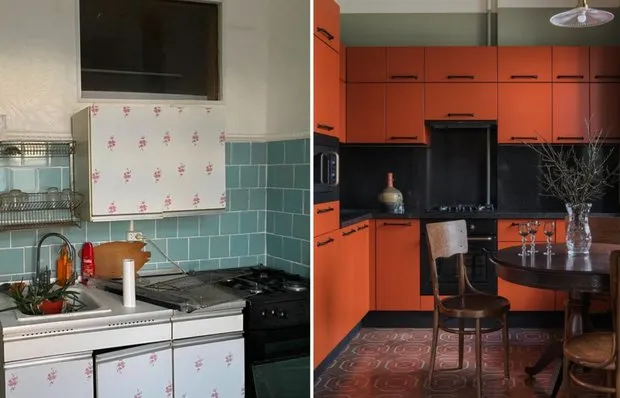 Before and After: How a Designer Updated Her 74 sq. Meter Stalin-era Apartment
Before and After: How a Designer Updated Her 74 sq. Meter Stalin-era Apartment